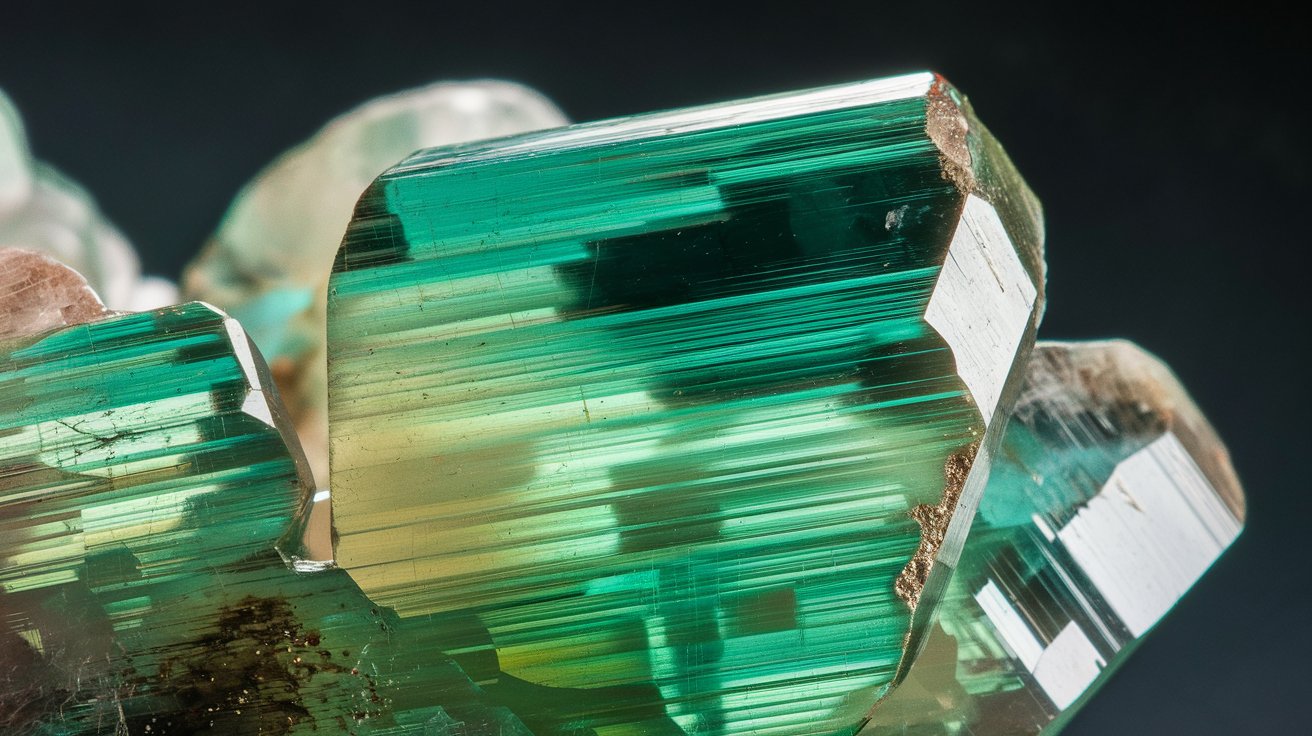
What is Aleksite? Aleksite is a rare mineral that captivates scientists and collectors alike. With a chemical formula of PbBi₂Te₂S₂, it combines lead, bismuth, tellurium, and sulfur in a unique structure. Found in places like Siberia, Wales, Finland, and Austria, aleksite often appears in gold-bearing ore deposits. Its crystal structure, derived from the tetradymite group, showcases polytypism, meaning it can form different structural layers. This mineral is relatively soft, with a Mohs hardness of 2½, and exhibits a metallic luster with a pale gray color. Aleksite's intriguing properties make it a subject of ongoing research in mineralogy and materials science.
Key Takeaways:
- Aleksite is a rare mineral with a complex composition and crystal structure. It's found in specific geological settings and associated with gold-bearing ore deposits, making it a subject of extensive study.
- Advanced imaging techniques have been used to study aleksite's structure, revealing its modular nature and ongoing potential for further discoveries. Further research is needed to fully characterize the crystal structures of additional members of the aleksite series.
What is Aleksite?
Aleksite is a rare mineral that has intrigued scientists and mineral enthusiasts alike. Its unique composition and properties make it a subject of extensive study. Here are some fascinating facts about this mineral.
-
Chemical Formula: Aleksite's chemical formula is PbBi₂Te₂S₂. This means it contains lead, bismuth, tellurium, and sulfur.
-
Composition: It consists of 44.25% bismuth (Bi), 27.02% tellurium (Te), 15.51% lead (Pb), and 13.22% sulfur (S).
-
Molecular Weight: The molecular weight of aleksite is 944.49 grams per mole, indicating its density and structural complexity.
Crystal Structure and Polytypism
Aleksite's crystal structure and polytypism are key to understanding its unique properties.
-
Crystal Structure: Derived from the tetradymite group of bismuth chalcogenides, aleksite has a complex crystal structure.
-
Polytypism: This mineral exhibits polytypism, meaning it can form different structural layers like seven- and nine-atom layers, stacked in various configurations.
-
Named Minerals: The aleksite series includes minerals such as aleksite (PbBi₂Te₂S₂) and saddlebackite (Pb₂Bi₂Te₂S₃).
Geological Occurrence
Aleksite is found in specific geological settings, often associated with gold-bearing ore deposits.
-
First Discovery: It was first described from the Alekseyev mine in the Sutamskii region of the Stanovoi Range in Siberia, Russia.
-
Other Localities: Other notable locations include the Clogau mine in Wales, the Iilijärvi deposit in Southwest Finland, and Fragant in Austria.
Physical Properties
Understanding aleksite's physical properties helps in identifying and studying this mineral.
-
Microcrystal Raman Spectrum: The Raman spectrum of an aleksite microcrystal, acquired using a laser wavelength of 633 nm, provides insights into its vibrational modes.
-
Transmission Electron Micrograph: TEM images reveal the detailed crystal structure and polytypic nature of aleksite.
-
Hardness: With a hardness of 2½ on the Mohs scale, aleksite is relatively soft.
-
Lustre: In polished sections, aleksite appears very pale gray with a slight greenish tint and a metallic lustre.
Structural Determinations and Imaging
Advanced imaging techniques have been used to study aleksite's structure.
-
High-Angle Annular Dark-Field Scanning Transmission Electron Microscope (HAADF-STEM): This imaging technique provides detailed information about the elemental distribution and structural layers.
-
Elemental Mapping: STEM energy-dispersive X-ray spectrometry (EDS) element mapping helps identify the elemental composition of aleksite.
-
Fast Fourier Transforms (FFTs): FFTs from HAADF-STEM images offer insights into the crystal structure by analyzing diffraction patterns.
Homologous Series and Named Phases
Aleksite belongs to a homologous series with several named and predicted phases.
-
Homologous Series: The aleksite series is derived from tetradymite, with different phases formed by varying the number of atoms in the structural layers.
-
Named Phases: Besides aleksite and saddlebackite, the series includes hitachiite (Pb₅Bi₂Te₂S₆), recently accepted as a new mineral.
-
Predicted Species: Predicted species within the series include unnamed phases with compositions between tetradymite and aleksite, and between aleksite and saddlebackite.
Paragenetic Data and Crystal Structural Layers
New data and structural analyses continue to expand our understanding of aleksite.
-
Paragenetic Data: New paragenetic and microanalytical data have been provided for aleksite series minerals from additional localities.
-
Crystal Structural Layers: The structural layers of phases in the aleksite series are more complex than previously thought, not just composed of PbS and Bi₂Te₂S.
-
Structural Determinations Validation: Single crystal X-ray analysis will validate the crystal structure of additional members of the series.
Modular Series and Future Research
Aleksite's modular nature and ongoing research promise further discoveries.
-
Modular Series: The aleksite series represents a modular series derived from tetradymite, allowing for the prediction of crystal structural parameters for additional members.
-
HAADF STEM Imaging: This imaging technique has been instrumental in studying the crystal structure of aleksite and other phases in the series.
-
Electron Probe Microanalysis (EPMA): EPMA has been used to analyze the elemental composition of aleksite, identifying the homogeneity of domains.
-
Future Research Directions: Further research is needed to fully characterize the crystal structures of additional members of the aleksite series, including single crystal X-ray analysis.
Final Thoughts on Aleksite
Aleksite is a rare mineral with a unique chemical composition and fascinating properties. With a formula of PbBi₂Te₂S₂, it combines lead, bismuth, tellurium, and sulfur. Found in places like Siberia, Wales, Finland, and Austria, aleksite often appears in gold-bearing ore deposits. Its crystal structure, derived from the tetradymite group, showcases polytypism, where different layers stack in various configurations. This mineral's soft nature, metallic lustre, and pale gray color with a greenish tint make it stand out. Advanced techniques like HAADF-STEM imaging and EPMA help scientists study its detailed structure and elemental composition. Ongoing research aims to uncover more about aleksite's crystal structures and potential new phases. Understanding aleksite not only enriches mineralogy but also opens doors to new discoveries in materials science.
Frequently Asked Questions
Was this page helpful?
Our commitment to delivering trustworthy and engaging content is at the heart of what we do. Each fact on our site is contributed by real users like you, bringing a wealth of diverse insights and information. To ensure the highest standards of accuracy and reliability, our dedicated editors meticulously review each submission. This process guarantees that the facts we share are not only fascinating but also credible. Trust in our commitment to quality and authenticity as you explore and learn with us.


